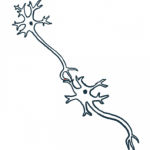Inflammation in brain membranes may act as trigger in MS: Study
Inflammatory response seen to spread to nearby brain tissue in mice
Written by |

Inflammation in the membranes around the brain may trigger an inflammatory response that can spread into nearby brain tissue, a new study in a mouse model of multiple sclerosis (MS) shows.
Researchers say these findings may help to advance scientists’ understanding of the mechanisms that underlie brain damage in MS.
“This work contributes a valuable data resource to the field, provides the first detailed … characterization in a model of [brain membrane] inflammation, and highlights several candidate pathways in … grey matter pathology” or the study of disease, the team wrote.
The study, “Spatial Transcriptomics of Meningeal Inflammation Reveals Variable Penetrance of Inflammatory Gene Signatures into Adjacent Brain Parenchyma,” was published in eLife.
Inflammation in brain membranes linked to damage in grey matter
The brain and spinal cord are surrounded by a set of membranes known as the meninges. Inflammation in the meninges is a common feature in all types of MS, and there’s mounting evidence that this inflammation may contribute to damage in the brain’s grey matter — the part of brain tissue housing the bodies of nerve cells.
Little is known, however, about the biological mechanisms linking meningeal inflammation, or inflammation of the protective membranes covering the brain and spinal cord, and grey matter damage.
To learn more, a team of scientists at Johns Hopkins University, in Maryland, conducted a series of studies in a mouse model of MS characterized by meningeal inflammation. It’s known as the Swiss Jim Lambert experimental autoimmune encephalomyelitis (SJL EAE) model.
“Grey matter injury is linked to disabling MS symptoms like cognitive dysfunction and depression,” Sachin Gadani, a neuroimmunology fellow at Hopkins and co-author of the study, said in a press release.
“Meningeal inflammation appears to be a critical driver of cortical grey matter pathology, but attempts to characterise the mechanism in an unbiased manner have been limited by the absence of spatially resolved data — that is, critical information about the anatomical relationship between meningeal inflammation and the underlying brain tissue,” Gadani said.
The researchers specifically employed a type of analysis called spatial transcriptomics. These transcriptomic analyses were first used to assess gene activity profiles of cells — that is, which genes were essentially turned on or off in different cells.
These gene activity data then were crossed with imaging findings acquired by MRI, with a goal of assessing how gene activity varies in different physical parts of the brain.
“We set out to determine the patterns of gene activity in the meninges and the surrounding grey matter, while preserving the context about the position of those cells in the brain,” Gadani said.
This was a novel approach, according to Saumitra Singh, also a study co-author and a postdoctoral researcher at Johns Hopkins.
“This is the first time a study has characterised a mouse model of meningeal inflammation and grey matter injury using spatial transcriptomics,” Singh said.
Scientists: Future work needs to focus on human samples
The results showed that areas of meningeal inflammation had increased activity of many genes involved in driving inflammation. This included genes in well-known inflammatory pathways such as TNF, JAK-STAT, and NFkB.
But some of these inflammatory genes also were highly active in grey matter tissue that was nearby to the areas of meningeal inflammation. Meanwhile, their activity was lower in areas of grey matter further from spots of meningeal inflammation.
In other words, these findings suggest that inflammation in the meninges was essentially spilling over to prompt inflammation in neighboring grey matter.
In particular, grey matter showed increased activity in genes involved in the activity of B-cells, a type of immune cell with a well-established role in driving MS. Genes related to antigen presentation and processing — the molecular system that immune cells use to identify potential threats — also were found at increased levels in the grey matter.
“We highlight the importance of antigen processing and presentation and B cell mediated inflammation, which are prominently [more active] in subpial [near-to-the-meninges] grey matter, in our model,” the researchers wrote.
The team said these findings provide a useful foundation for future studies, though they stressed that the mouse model used here is an imperfect replication of MS in people, so further research will be needed to validate these findings in human tissue.
“Our findings have revealed several candidate pathways in the development of grey matter injury,” said Pavan Bhargava, MD, a professor at Hopkins and senior author of the study.
“Future work should focus on spatial transcriptomics in human samples which, thanks to advances in technology, is now becoming more feasible,” Bhargava concluded.







